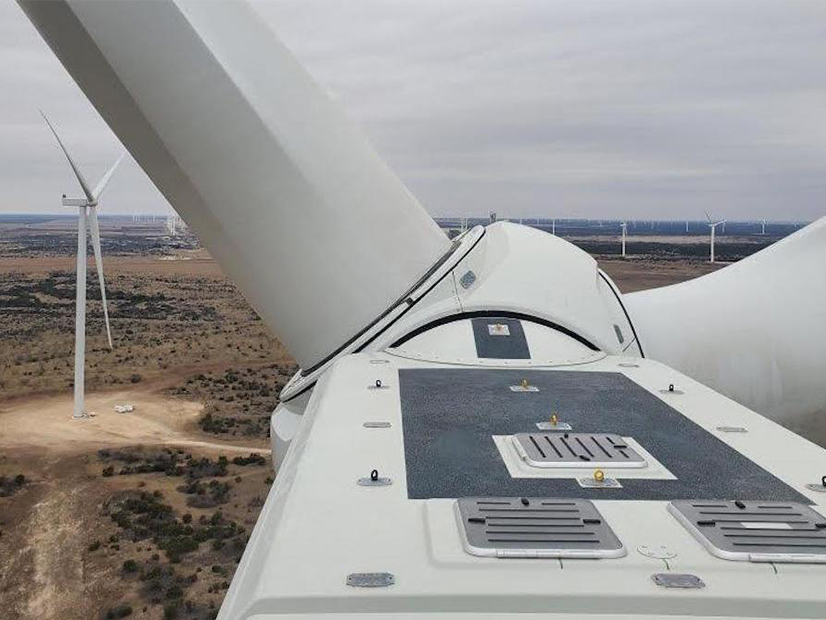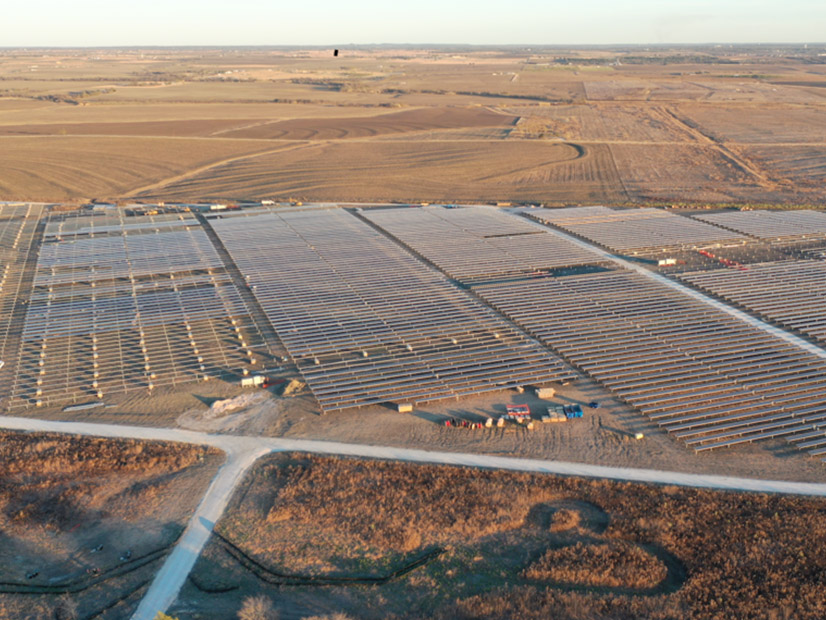
Duke Energy (NYSE:DUK) on Thursday touted its ongoing “clean energy transformation” through its five-year, $59 billion growth capital plan during the company’s second-quarter earnings call, highlighting decarbonization and renewable development efforts across the country.

CEO Lynn Good said the company is continuing construction on about 250 MW of new solar projects in North Carolina and Florida and expects to bring them online by the end of the year. Duke also recently commissioned the 144-MW Pflugerville Solar and 182-MW Maryneal wind farm projects in Texas, Good said, pushing the company over 10,000 MW of solar and wind resources.
Good said that at the current pace, Duke is on track to pass 16,000 MW of renewable resources by 2025 and about 24,000 MW by 2030. She said that by 2050, renewables will represent 40% or more of Duke’s energy mix.
“With the completion of these two projects, we hit a significant milestone,” Good said. “In addition to carbon reduction and the benefits of creating a diverse energy infrastructure, solar and wind investments foster economic development, tax revenue and job creation in the areas we serve.”
Net-zero Steps
Besides its solar and wind efforts, Good pointed to nuclear energy remaining a “foundational component” of Duke’s clean energy strategy, which currently provides the largest source of carbon-free energy in its system.

The company submitted its application in June to the Nuclear Regulatory Commission to renew the operating licenses of the Oconee Nuclear Station in South Carolina for an additional 20 years. The license renewal application marks the first submitted among Duke’s six nuclear units in the Carolinas, Good said, and the review process is expected to last 18 months.
Oconee is Duke’s largest nuclear station, with three generating units producing more than 2,500 MW of generation. Good said Duke’s nuclear fleet provided 83% of the company’s carbon-free generation in 2020.
“We’ll pursue similar extensions for each of our remaining reactors as they approach the end of their respective licensing periods,” Good said.
Duke is continuing to develop its electric vehicle infrastructure through eTransEnergy, a subsidiary introduced in February aimed at offering energy transportation services to logistics and last-mile delivery companies, along with school districts and transit agencies. Good said eTransEnergy was recently named a preferred provider by General Motors to help its fleet customers transition to EVs.
Duke asked North Carolina regulators in June to approve $56 million in spending to fund more than 1,000 EV charging ports and aid school systems to purchase 60 electric school buses. (See Duke Proposes $56M EV Charging Plan in N.C.)
“Electrifying vehicles is a win-win approach to reducing carbon emissions from both the electric and the transportation sectors,” Good said. “Our ambitious climate strategy also puts us in a strong position to help other sectors, such as transportation, meet their emission-reduction goals.”
Legislation
Good said Duke is monitoring developments in North Carolina as the House of Representatives recently passed House Bill 951. The legislation calls for the retirement of 12 coal units at five locations in the state, replacing them with “cleaner forms of generation, renewed solar programs and modern ratemaking tools to better align clean energy investments with customer needs.” (See NC Republicans Roll out Bill to Close Coal Plants, Add Renewables.) Good said Duke supports the initiatives in H.B. 951.
She also addressed the infrastructure bill currently making its way through Congress. She said the company is “engaged” with federal lawmakers and the Biden administration on several issues in the bill, including tax and climate policy. (See Bipartisan Infrastructure Bill Offers Funding for Grid, EVs.)
With the bill’s funding for a large-scale expansion of charging infrastructure to “prepare for and further drive adoption of electric vehicles,” Good said, investments in the grid will also need to grow. Funding for innovation in the bill is also a “critical part of the journey to net-zero” emissions, she said, because existing technologies won’t be enough.
“We’re pleased to see the framework includes funding to accelerate the development of next-generation clean-energy technologies such as hydrogen, carbon capture and advanced nuclear,” Good said. “Robust and sustained government support is vital to ensure the commercialization of these advanced technologies. It’s critical for us to tackle this issue today so the technologies are scalable when we need them.”
Earnings
Duke reported second-quarter adjusted earnings per share of $1.15, up from $1.08 during the same period in 2020. Unadjusted earnings per share were 96 cents compared to -$1.13 in 2020.
CFO Steve Young said the difference was because of “onetime impacts of the initiative to redefine workspace usage” resulting from COVID-19, including the consolidation of corporate office space and accommodating a hybrid work environment. Young said the office space initiative resulted in a 60% reduction in square footage and annual savings of approximately $25 million to $30 million.
“Overall, we had strong results compared to last year, supported by our continued execution and the rebounding economy,” Young said.


